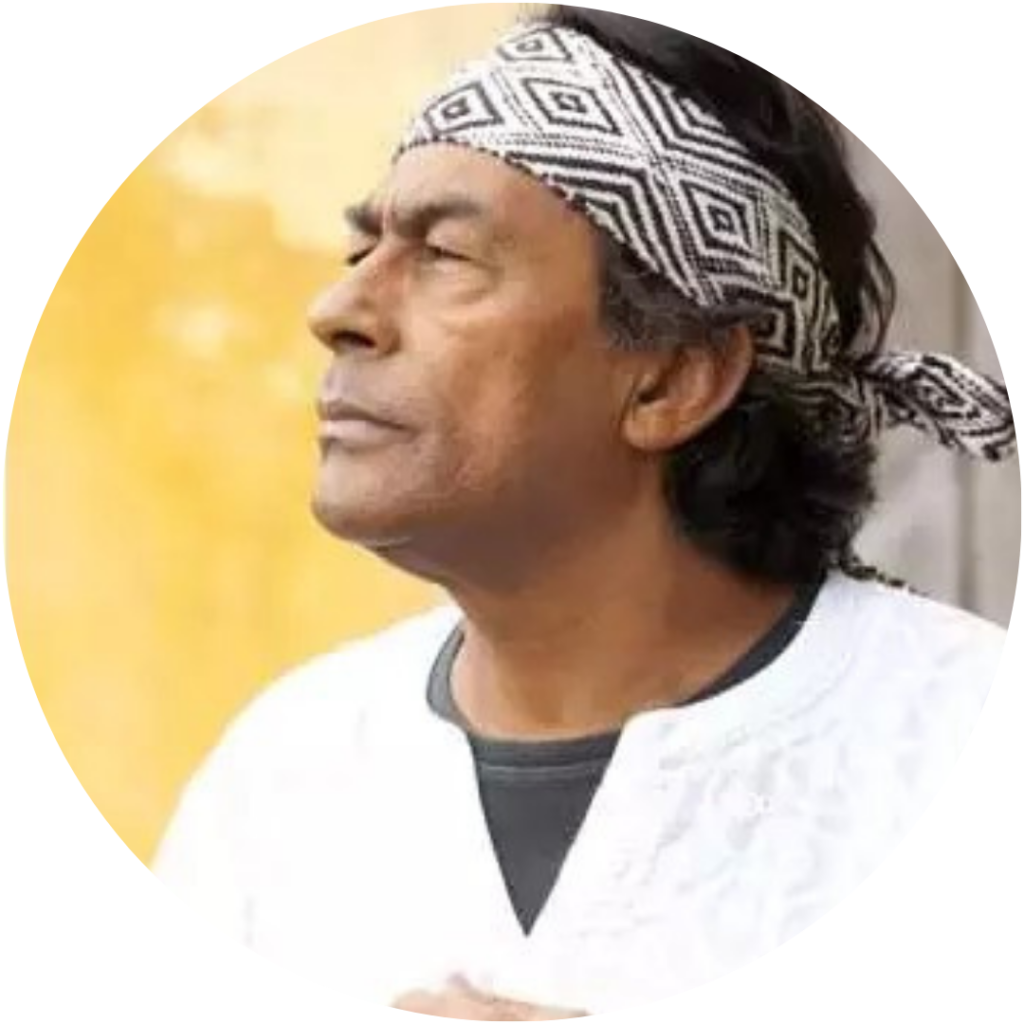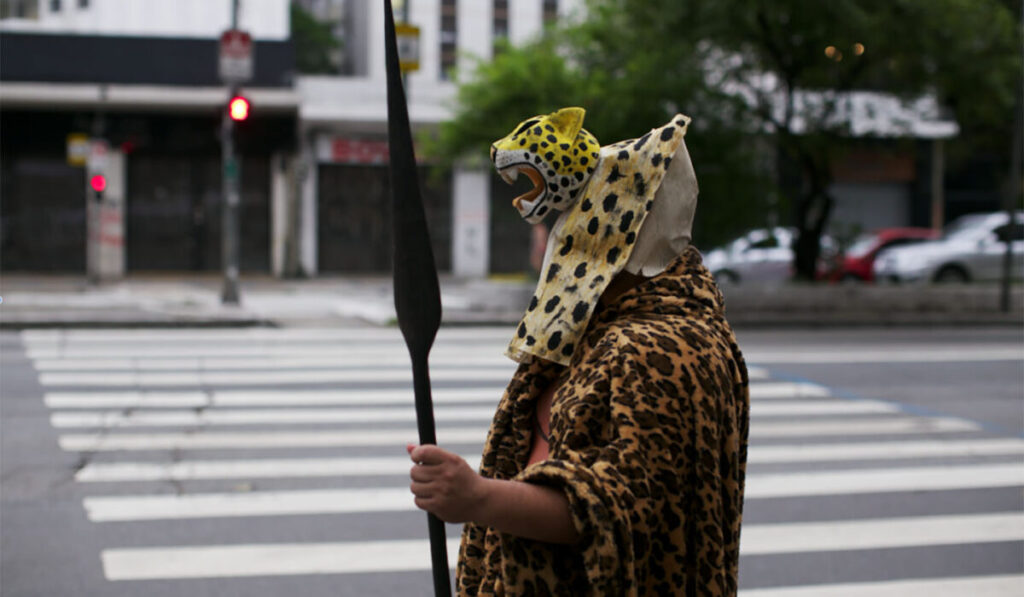Indigenous Ontologies.
The traditions passed down from one generation to the next maintain a deep and spiritual connection with nature in both Arctic and Amazon regions. Distinct Indigenous Ontologies inform the direction of the Arctic / Amazon project. In the words of Yube Huni Kuin, who observes that all Indigenous knowledge is rooted in artistic knowledge: “what can save the world is spirituality, is a connection with nature.”
Knowledge Exchange Workshop.
Dr. Gerald McMaster and Dr. Nina Vincent are joined in conversation by Ailton Krenak to discuss the profound importance of the Indigenous Ontologies and ways of being that stem from the relationship with the Land, and the idea of “forestzenship” as opposed to citizenship. The workshop also touches upon Ailton Krenak’s historic speech on September 4, 1987 at Brazil’s National Constituent Assembly. An important moment for Indigenous peoples in Brazil, the speech still resonates today – for some as “performance art” and for others as a groundbreaking use of Indigenous language and art as political resistance.

Ailton Krenak
Ailton Krenak is an Indigenous human rights activist, writer, curator, and professor at the Universidade Federal de Minas Gerais. Part of the Krenak people that live by the Rio Doce in Minas Gerais, in southeast Brazil, his work challenges western and capitalist notions of natural resources exploitation, humanity, and ways of living.
Ailton Krenak. Photo by Adriana Moura/Divulgação
Resource Package.
The Arctic/Amazon digital resource is a free educational tool, featuring an abridged version of the Arctic/Amazon: Networks of Global Indigeneity Epistolary Exchange and a series of four virtual Knowledge Exchange Workshops led by the two principal authors – Dr. Gerald McMaster and Dr. Nina Vincent. This document is offered by Wapatah Centre for Indigenous Visual Knowledge as part of the publicly available digital resource and as a companion online tool accessible alongside the Arctic/Amazon: Networks of Global Indigeneity publication.
Arctic/Amazon: Networks of Global Indigeneity is co-authored and led by Dr. Gerald McMaster and Dr. Nina Vincent.

Dr. Gerald McMaster
Gerald McMaster, O.C., is one of Canada’s most revered and esteemed academics. He is a curator, artist and author, and is currently professor and Tier 1 Canada Research Chair of Indigenous Visual Culture and Curatorial Practice at OCAD University, where he leads a team of researchers at the Wapatah Centre for Indigenous Visual Knowledge. He is nehiyaw (Plains Cree) and a citizen of the Siksika First Nation.

Dr. Nina Vincent
Nina Vincent is a Brazilian anthropologist currently working at the National Institute of Historical and Artistic Heritage (IPHAN). Her work focuses on intangible heritage preservation, museum studies, intersection of contemporary art production and community partnership building, Indigenous art and knowledge, and cultural perceptions of nature and politics.
EPISTOLARY TWO: INDIGENOUS ONTOLOGIES AND POLITICAL RESISTANCE
Dr. Gerald McMaster
Brazil and Indigenous peoples have been in my mind ever since I first traveled to São Paulo and Rio de Janeiro back in 1991 for an art conference, which was in conjunction with the São Paulo Biennale. Coincidentally, it was held the year before the Columbus Quincentennial.
I met with the Brazilian artist Maria Thereza Alves. She and her partner Jimmy Durham had been living in self-imposed exile in Mexico. An observation she made has stuck in my mind ever since. I had little knowledge of the conditions under which Indigenous peoples of Brazil were living and what she shared with me was shocking. She said they were still treated as minors. But what did this mean? It meant that they were living under complete systemic control, which extended and permeated all levels of Brazilian society in the way they viewed and treated Indigenous peoples. They were placed in the same category as any person under sixteen years of age. They were barred from voting or obtaining a passport. They needed the permission and approval of a government official to conduct their life.
I was astounded by her story. Even more so because, here I was, an Indigenous person giving a paper at an international conference about why Indigenous Canadians were not celebrating Columbus’s arrival into the Americas. My message at the time concerned giving voice to Indigenous peoples. In Canada and the USA, since the 1960s Indigenous peoples have altered the social, political, and cultural landscape in many ways. We have a smaller population in Canada than the US or Brazil, thus percentagewise the visibility and presence of Indigenous people in various sectors of society is far greater. Overall, both countries no longer treat Indigenous peoples in the same way as the Brazilian state. Various freedoms had been hard fought, to the degree that Indigenous peoples now have the same rights and freedoms as any other Canadian citizen. Since 1991, I have seen the Indigenous peoples of Brazil in the news, but usually on the short end of the stick where they are still the object of racism and human rights violations. None more so than in the last few years.
Dr. Nina Vincent
When we acknowledge the Amazon, we acknowledge a territory that occupies nine countries: Bolivia, Brazil, Colombia, Ecuador, Guyana, Perú, Suriname, Venezuela and Guyane Française. Each State has its own history of colonization, its own laws to govern and contain Indigenous peoples. From the perspective of Brazil, since 1500, when the Portuguese invaded the land, Indigenous people were killed or enslaved, Christianized, displaced, and forbidden to express their culture. Throughout the colonial, Imperial and Republican periods, genocide and dispossession persisted, as well as ethnocide through the “assimilation” process. The legal status of Indigenous ranged from not being classified as a person to being under guardianship of the church, its patrons, or of government agencies.
A group of Indigenous researchers from Acre, in the Brazilian Amazon, have created a historical timeline describing these periods of colonial and State development. They are: “Time of Malocas, Time of the Runs, Time of Captivity, Time of the Rights and Time of Indigenous Governance.” Of them, the “Time of the Rights” is notable because it is periodized to the 1980s, when Indigenous social movements consolidated and fought for the recognition of their rights to the land, to full citizenship, and to live according to their cultures. Their objective was to have these rights recognized within the new constitution, which was established in 1988 during the process of redemocratization. That is just a few years before the time you, Gerald, shared your conversation with Maria Thereza Alves.
Sadly, regardless of laws that appear on paper, which are often not applied, conflict has been the result. This is due to continuing discrimination and the political and economic interests of the Brazilian State. Yet, Indigenous leaders have amplified their voices in relation to this discrimination and are fighting to ensure that their rights are enforced. Participation in different sectors of society is increasing, which is a victory in one sense, but it also means more people must live outside of their traditional home communities.
For an Indigenous person, the possibility of leaving a traditional village to study, learn about non-Indigenous culture and appropriate the newcomers’ tools in order to help defend their societies is empowering but also perceived as a burden. In the Amazon, there are many Indigenous peoples who live in partial or total isolation. Many of them wish to be left alone to live their lives in their own way. The urban Indigenous express an internal conflict: they must live in the city and conform to White institutions, only to feel displaced and suffer while defending their traditional communities.
Today, Brazilian politics further endorses the historical disrespect for Indigenous peoples and the environment, and even the constitutional rights gained during the 1980s are now endangered. The number of invasions on Indigenous lands is increasing, as is the violence.
The situation is critical, but we must bolster the strength of Indigenous organizations and the alliances established with greater society to defend their survival and their rights. There is the experience of Indigenous governments, like in Bolivia, which, despite problems and local contestation, have created different policies from a uniquely Indigenized perspective. There is also an issue common to Peru and Bolivia where the Amazonian Indigenous are much less “visible” than Andean Indigenous people. As a result, they simultaneously struggle while making-up the national identity of these countries. Most Latin American countries also share a dark history of periods of dictatorship. In Peru, for example, Amazonian Indigenous communities were caught in the middle of the repression of the state and the guerrilla army of Sendero Luminoso, resulting in terrible massacres and persecution. Then came the neoliberal governments of the 1980s, then left wing and populist governments, then a recent and dramatic turn to the right and conservative governments. There is much to be said on the Amazon that is beyond the predicament of Brazil.
Citation
McMaster, Gerald and Nina Vincent. “Epistolary Two: Indigenous Ontologies and Political Resistance.” Arctic/Amazon: Networks of Global Indigeneity, Toronto: Wapatah Centre for Indigenous Visual Knowledge, OCAD University, 2022.

Image: Denilson Baniwa, Pajé-Onça (Shaman-Jaguar) hunting on Avenida Paulista, 2018, performance
Arctic/Amazon: Networks of Global Indigeneity and accompanying digital educational resource are offered through the generous support from a SSHRC Connections Grant,
The Appleton Foundation, The Jack Weinbaum Family Foundation, Nancy McCain and Bill Morneau, Michael Audain, Kiki and Ian Delaney, Michelle Koerner,
and Jamie Cameron and Chris Brett.

